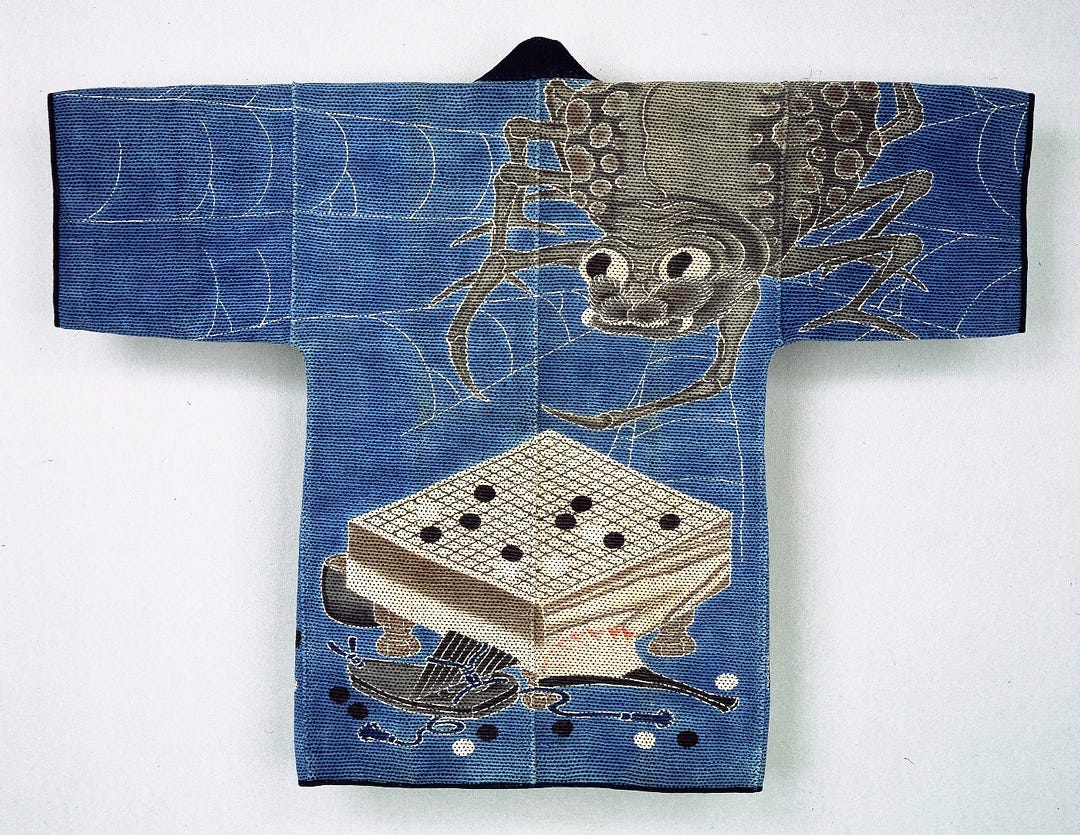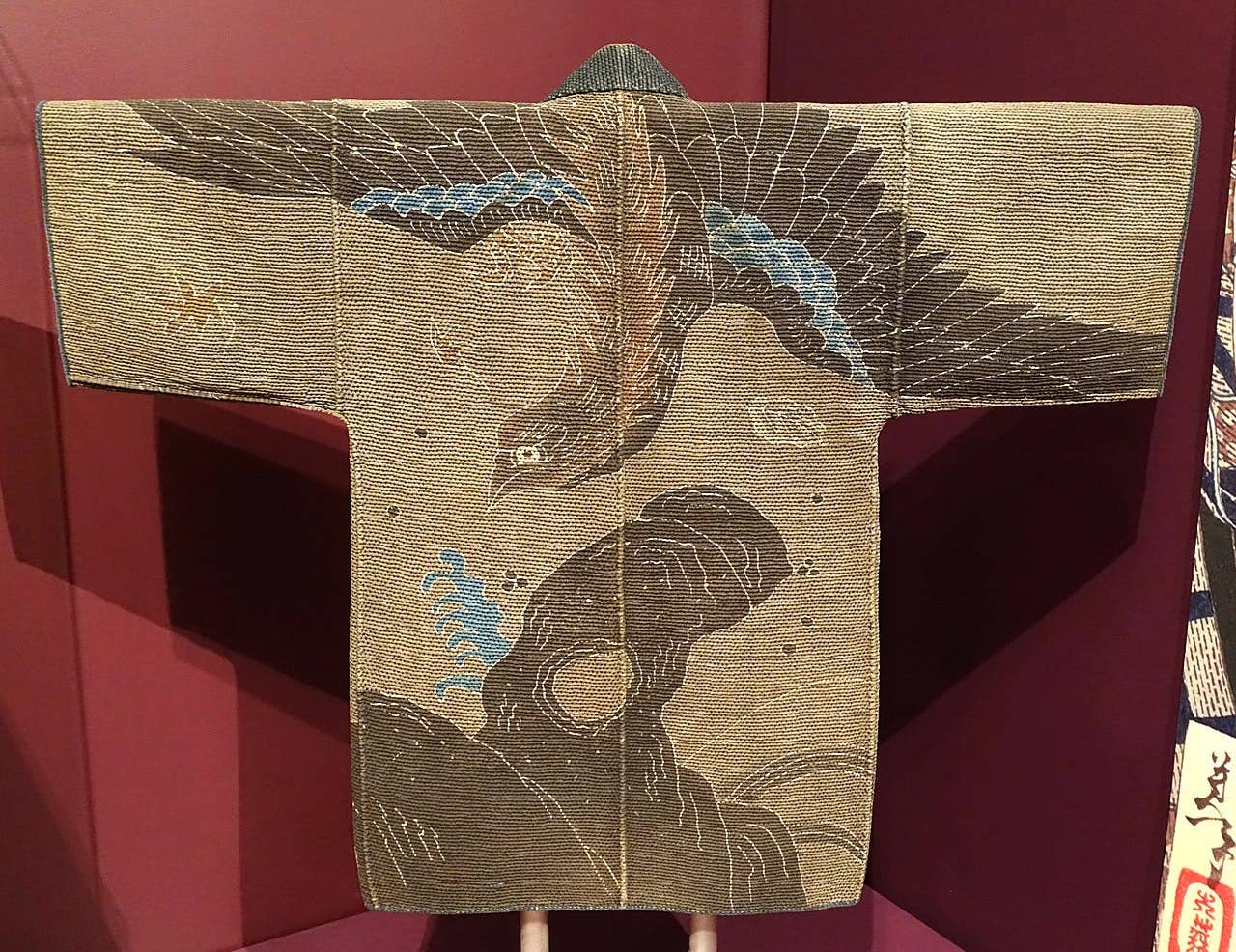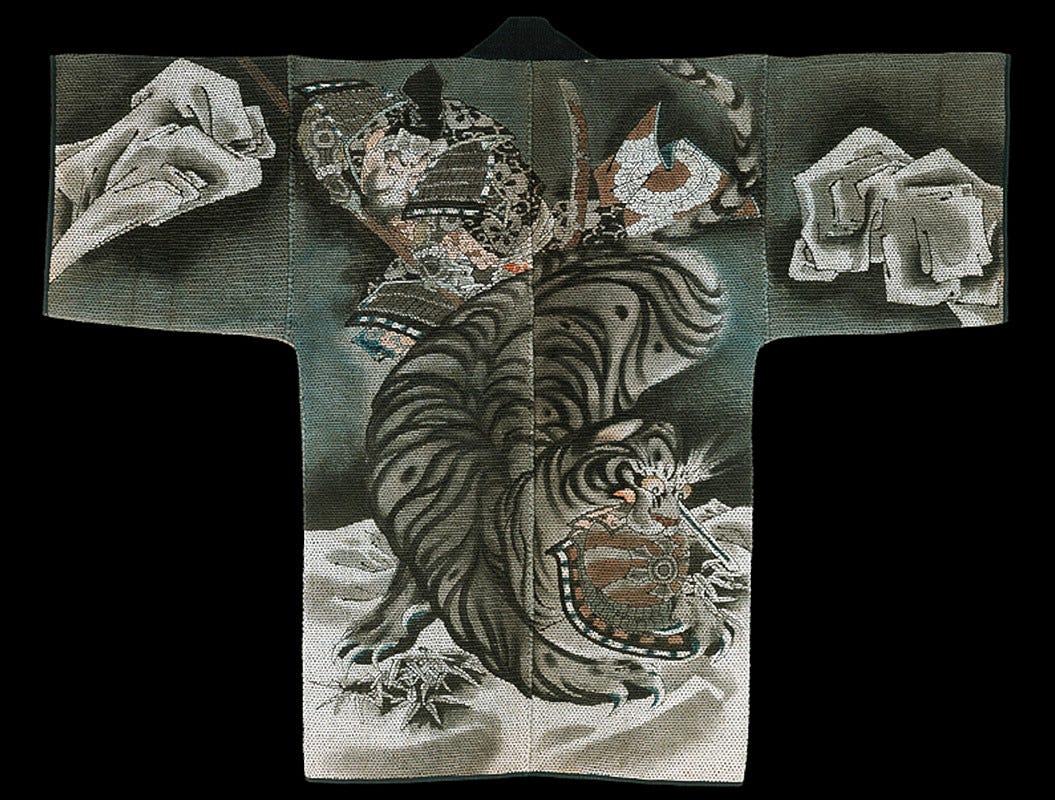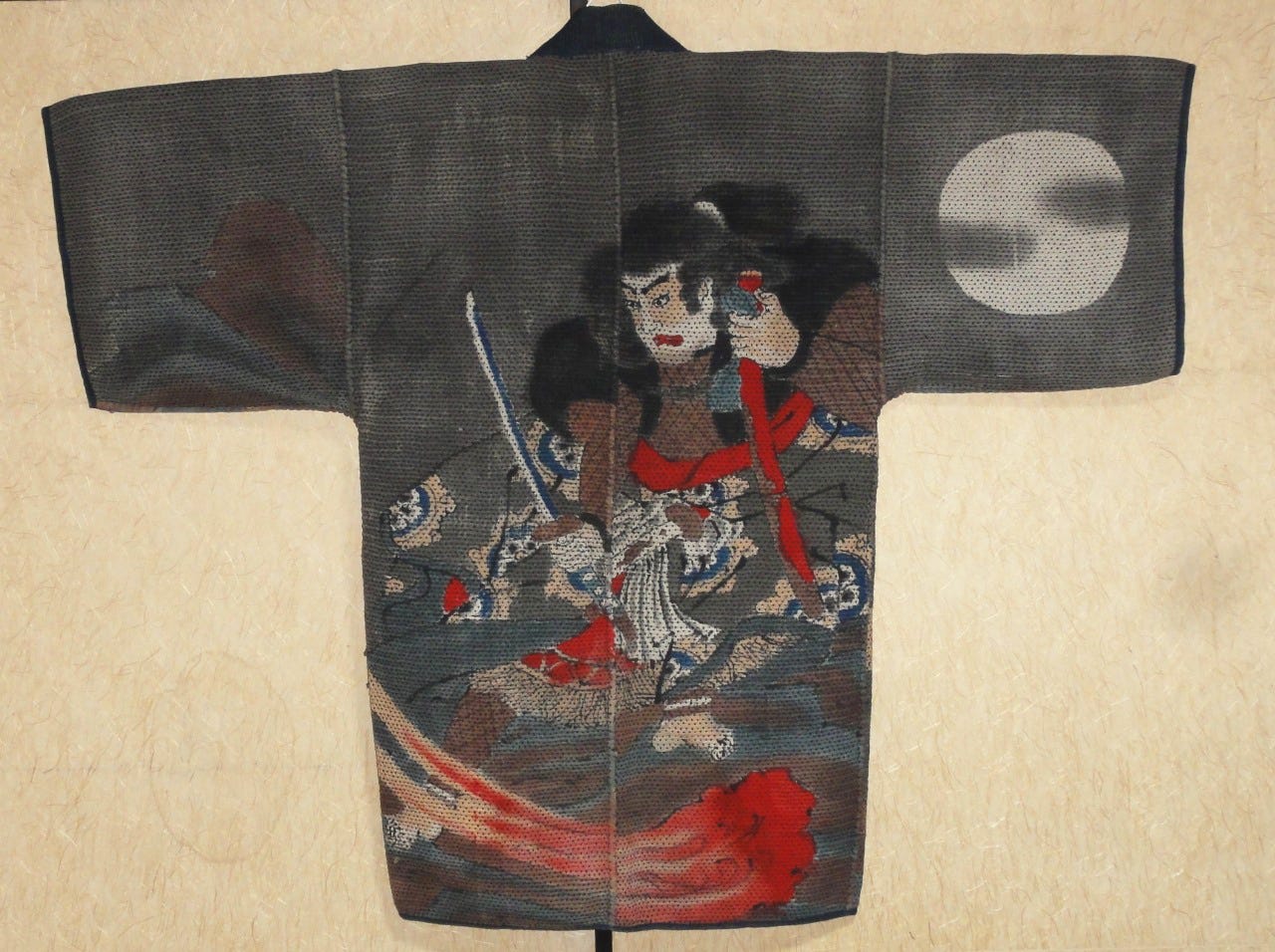Japanese Firemen’s Coats Ablaze with Symbolism
During the Edo period in Japan (1603-1868), folklore heroes and mythological beasts decorated the uniforms of firefighters.
During the Edo period in Japan (1603-1868), folklore heroes and mythological beasts worked alongside firefighters in battling blazes. Not in reality, of course, but they did symbolically have firemen’s backs.
Fires were frequent during this period because of crowded living conditions and wooden buildings, and the firefighters’ objective was to prevent a burning house from spreading its flames to the neighboring residences. Japanese firefighters of the Edo period used much different techniques than American firefighters, and although they were supplied with portable hand-pumps, the stream of water was too weak to do much good against fire. This meant that firemen did not save the home, but rather tore down the burning structure and extinguished the fire. They did this by using long poles and other fire implements to demolish the blazing house and once the fire was doused, the surrounding homes were once again safe.
In the era of peace in Japan in the 19th and early 20th centuries, these firefighters emerged as latter-day samurai heroes, with the motto, “duty, sympathy and endurance.” Heroes like this needed a special uniforms, which were reversible coats called hikeshi banten. While the exterior of the firefighter’s coat tended to be plain and uniform-like, with characters or numbers of the fire brigade stenciled in white for quick identification, needed if a building collapsed or a fire spread too quickly, the interior was a work of art. Images drawn from woodblock Ukiyoe prints of the Edo period, as well as the Meiji period (1868-1912) were painted on the interior and based on popular folklore and legends including ghostly dragons, fighting warriors, and other symbols meaningful to each firefighter.
Firemen were the warriors of their day in Edo, and many of them had their bodies tattooed with the same designs as seen on these coats. Some of their supporters, such as merchants, would have these elaborate coats made so they could wear them like a tattoo wrapped around their bodies.
The handmade coats were fashioned from several layers of highly absorbent quilted cotton fabric. They were then resist-dyed using the tsutsugaki method, which involved drawing rice-paste designs on the cloth, dyeing the cloth multiple times and then washing off the paste to reveal the layering of colors. The whole process could take almost three weeks.
They were worn plain side out and before firefighters entered the scene of a blaze, the coats were thoroughly soaked in water (they could weigh more than 75 pounds) to protect the men from burns and blunt the impact of falling objects as they went about their dangerous work.
Wearing the coats plain side out also protected the elaborate interior designs from damage, and also allowed the firemen to be in direct contact with heroes and creatures represented on the insides of these beautiful garments including water symbols such as dragons and storm clouds.
Coats featured heroes like Rorihakucho Cho Jun (Zhang Shun), whose fearlessness and courage was popular in 19th-century Japan; Musashibo Benkei, depicted in folklore as a man of great strength and loyalty - on one of the coats featured here, he is shown fighting an evil carp; and Minamoto-no-Tametomo, a historical figure famous for his courage and skill as an archer. Coats also featured tigers, which represented strength and courage, and dragons, which were worshipped during the Edo period as water gods.
If firefighters were successful in extinguishing the blaze, they would turn their coats inside out and parade victoriously by cheering onlookers, pridefully symbolizing the successful outcome and allowing their bravery to be compared to folktale heroes.
All of the coats featured in this story are in various museums, but we have spotted other of these hand-painted coats for sale online ranging from $500 to $7,000; different prices depend on the age of the coat. As usual, we advise you to do your homework before buying one.













